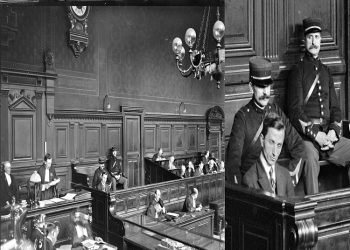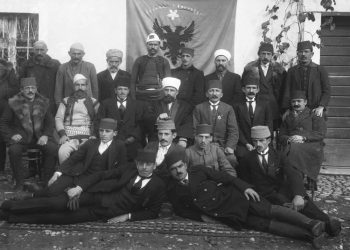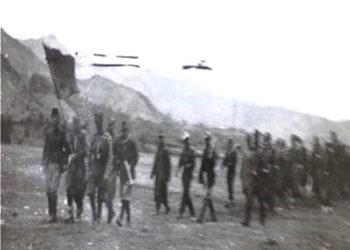By Leonora Laçi
Memorie.al / Writing about the theologian, patriot, nationalist, and Shkodra intellectual Imam Salih Myftija is not an easy task, as his activity transcends the borders of natural Albania and reaches all the way across the distant Atlantic. His work requires detailed studies, so I do not want to wrongfully claim that I have said everything. For such figures, there is always something to add and complete.
Who was Salih Myftija?!
Born in a century of turmoil and struggles for autonomy in the distant year of 1891, a contemporary of significant national events, such as the Independence of Albania, which is etched in golden letters in our history, as well as the painful events for the entire civilized world, such as the two World Wars. Coming from a Shkodra family that has always contributed to religious and national issues, it has produced early leaders of the Muslim community there.
Salihi received his early education at a Turkish school in Shkodër from 1898 to 1904, but alongside religious lessons, he had zeal for the national cause that was crystalizing at the beginning of the 20th century. At a young age, he was a partisan in the schools where he studied with Latin letters; he was knowledgeable in Old Turkish and Arabic. He never lost hope of seeing his homeland advanced and developed, which is evident in the initiative for the independence of the Albanian Mosque from the Turkish one, for which the First Muslim Congress was held on February 24, 1923, in Tirana.
He was also an initiator for the translation of the Quran into Albanian, to make it easily understandable for Albanian Muslims. Salih Myftija, in addition to religious teachings, also instilled love for the homeland. In 1927, he was appointed mufti in Krujë, and later as the Chief Mufti of the prefecture of Shkodra and Kosovo, by special decision of the High Council of Sharia.
He performed his duty as chief mufti excellently; his culture and broad range reflected on the believers, using the best tools available: “Tolerance, faith in God (Allah), and the flag.” Imam Salih Myftija never agreed with the fascist occupiers; for this, he was interned in Gjirokastër for nearly two years and was dismissed from his position as Chief Mufti by decree of Vittorio Emanuel III.
What was the Imam’s stance towards the occupiers and communists?!
After Italy’s capitulation in September 1943, he rejoined the ranks of nationalists, primarily as a supporter of the Legality group but still uncompromising. This is stated by his son, Dr. Fuad Myftija, in his memoirs: “My father was a figure in the National Movement, he was among the first nationalists and never made compromises, neither with the fascists nor with the Nazis. We formed illegal groups and bands against the Germans…”! (Excerpt from the interview conducted by Dalip Greca, Dr. Fuad Myftija, February 20, 2007).
What is notable during this delicate time for Albania is that the enemy of nationalists was no longer just external (the Germans) but also internal (the communists). Despite the divisions between the Catholic and Muslim Clergy, the common threat posed by the National Liberation War made them forget their quarrels and become close friends and collaborators. (excerpt from the presentation by Nexhmi Bushati at the tenth scientific session of the “Trojet e Arbërit” Association, p. 545). Collaboration would follow the developments of the Mukje Assembly, where personalities such as Salih Myftija, Hafiz Ali Kraja, Mons. Thaçi, Father Anton Harapi, Sulço Beg Buashti, etc., decided to create the Anti-Communist Front.
Where several regional alliances were formed, such as in Shkodër, Pukë, Lezhë, etc., which insisted on the landing of the Anglo-Americans, Dr. Fuadi continues with more details of that time when the homeland was occupied by the Nazis, where he had taken to the mountains together with his father. The Imam collaborated with Nik Sokoli from Nikaj-Mertur, who had formed his own squad. The meeting took place in Gruemirë, where Nik Sokoli expressed his indignation, as the Anglo-Americans were only offering aid to the communists.
Kapedan Xhemal Laçi also arrived, who had traveled with a large group of Zogists from Puka; Sadik Shaska and his family also came from Vlorë, and others, all of whom stayed in barracks. The squads of Nik Sokoli and Jup Kazazi encountered a German convoy and opened fire, but there were no casualties, and the Germans continued their way, even though this could have had serious consequences. Xhemali, as a military man, suggested that they change location since the Germans might be looking for reinforcements.
The situation in Albania was becoming increasingly difficult for nationalists, who traveled from south to north to find an escape route. The home of Imam Salih Myftija had become a meeting point for nationalists, who were warmly received and sent off by the host, with the wisdom that characterized him.
Dr. Fuadi continues: “At that time, Mid’hat Frashëri, Baba Rexhepi, and Zef Pali had arrived. All the leaders had gathered in Shkodër.” Imam Salih Myftija, together with other patriots such as: Fuad Myftija, Colonel Xhemal Laçi, Teki Xhindi, Hysen Prishtina, and dozens of others, left the country towards Tivar.
Specifically on November 21, 1944, (from the newspaper “Atdheu” March-April 1988), but after facing obstacles caused by the Montenegrin police due to being armed, they were forced to sail on an old boat toward the Adriatic Sea, arriving in the coastal city of Brindisi, Italy. They then surrendered to the Allied military command, who later placed them in the well-known camps in Italy.
In the camps of Grumos, with the war prisoners
As Dr. Fuadi expressed, this place was “red” everywhere with Russian flags and the red star, sickle, and hammer. The camps were in miserable condition; Albanians were unwashed and dirty, as they came from the mountains. The rules of discipline were strict, and they were treated poorly and interrogated.
Imam Salih Myftija distinguished himself for his wisdom, often mediating conflicts between Zogists and Ballists. The poor conditions of the camp did not defeat or bend the calmness and foresight of this peace-loving man, who, with faith in God, managed to calmly control many situations where other Albanians had lost their patience.
Salih Myftija nurtured his son’s love for education, who was also a friend and companion on the difficult paths of unwanted emigration, as staying in Albania was not possible. In such an unfavorable situation for nationalists, Fuadi would be educated and graduated in Italy.
Consideration for Salih came not only from King Zog, who made him his advisor, but he was also elected to head the commission that traveled to Egypt for a meeting with the exiled King, where all political groups would gather. Consideration for him was also had by the Anglo-Americans, as the Imam built friendships not on political views or religious beliefs; thus, it is justified why they kept him close.
Years ago, a document was published dating back to 1945, which states among other things: “In January 1945, two Albanian politicians, although interned in a transit camp in Bari, the esteemed Mit’hat Frashëri, who was the leader of the ‘National Front’, and a cleric from Shkodra, Salih Myftija, the latter on behalf of the ‘Legality’ organization, requested the American Secretary of State not to undertake any initiative to recognize the communist government formed before the liberation of the country.” (This document was published by the British in 2000 on the website “Investigim”).
From Egypt, Imam Salih Myftija would travel to Syria and Lebanon, and finally settle in the USA in 1965, where as a land of principles of freedom of expression and religious belief and a place of democracy, he continued without any problem his national and religious activities. The establishment of the Albanian-American Islamic Center became a warm hub for Albanians. The theologian, patriot, and intellectual Imam Salih Myftija, who never forgot his homeland but strived to serve it even from afar, contributed to the establishment of religious, patriotic, social, educational, and cultural centers.
The merit for this also belongs to the cooperation of Imam Vehbi Ismaili and Imam Isa Hoxha. The need for a Center that would serve as a meeting place for Albanians arose with the increase in the number of Muslim Albanians in the USA. The meeting on May 16, 1966, under the leadership of Salih Efendi Myftija of this Albanian-American Islamic Center, concluded with the decision to establish a Mosque that would serve to strengthen morals and spread religious teachings and love for the homeland among the believers.
On November 12, 1972, Imam Salih Myftija, after many efforts and dedicated and tireless work, would cut the ribbon of the Mosque in Brooklyn, New York, where he was greeted by several personalities as well as the local American press and the Albanian press in America. It is worth mentioning his close friendship with Monsignor Zef Oroshi (1912-1989), the founder and leader of the First Albanian Catholic Church in the USA.
Imam Salih Myftija passed away on May 19, 1978, at the age of 87, and representatives from the three religious beliefs attended his funeral, as a distinguished figure like Salih Myftija deserved a worthy farewell, just as his admirable activity was on both the national and religious levels.
Posthumous Decorations
Imam Salih Myftija was decorated posthumously with the motivation: “For his contribution to the establishment of religious institutions for Albanian immigrants in the USA, in support of religious tolerance and cooperation for the benefit of national interests” – awarded by the former President of the Republic of Albania Bamir Topi. He was also awarded the title “Honorary Citizen” posthumously by the Municipality of Shkodra on March 6, 2011. Memorie.al




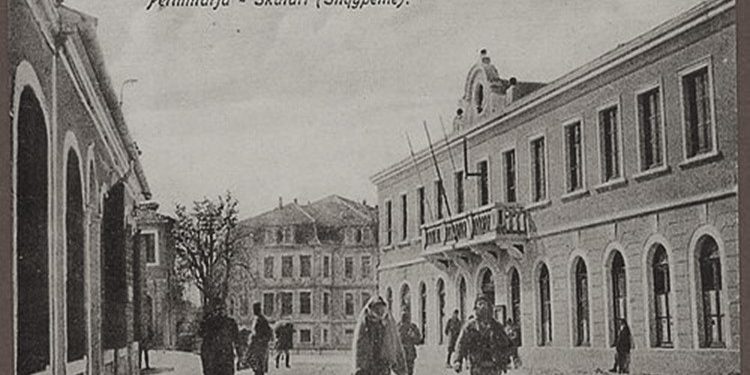
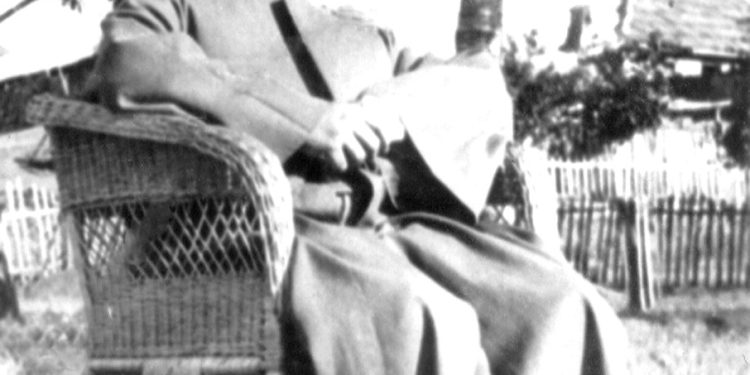
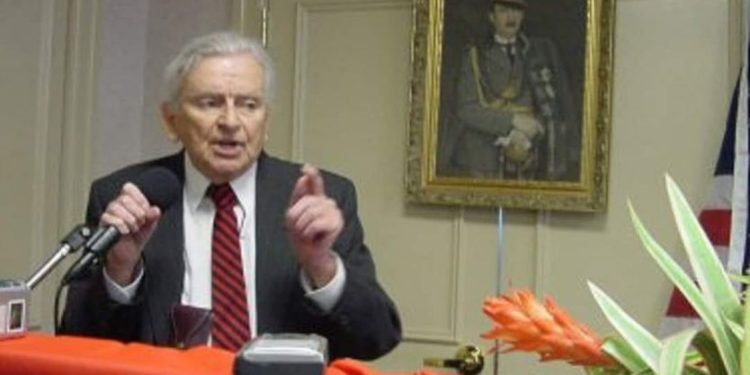
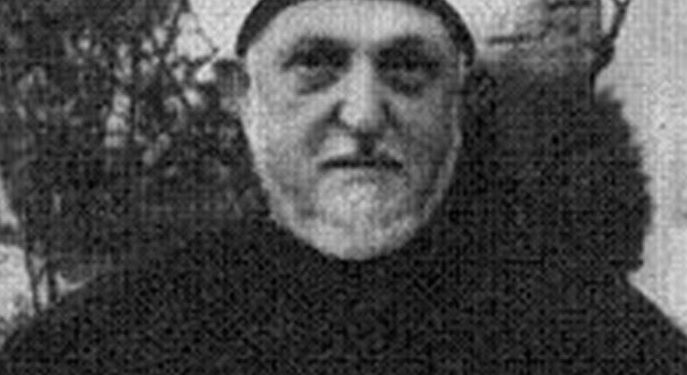
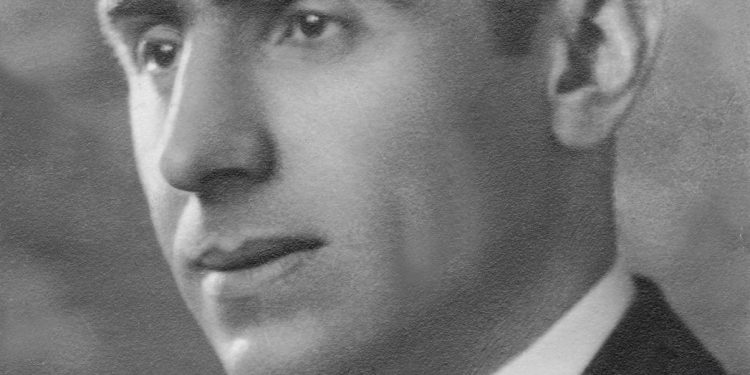
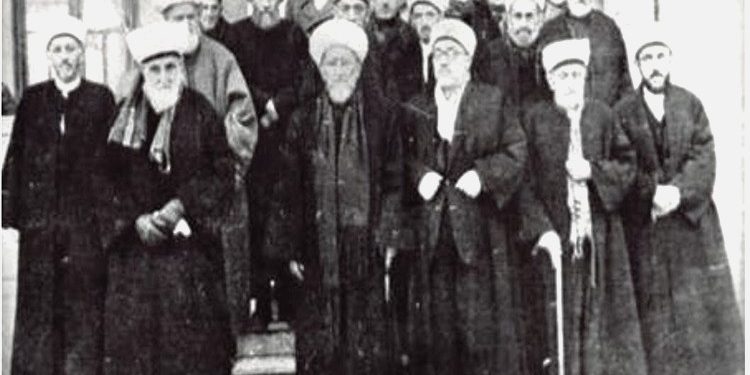
![“We hosted the German friend with wine, ‘Moskat’ raki that Enver [Hoxha] used to drink, but in his villa, he told me: ‘Hey Belul, who told you to accompany Strauss…?’”/ The rare testimony of the former Chairman of the Pogradec Committee](https://memorie.al/wp-content/uploads/2025/11/jozef-shtarus-350x250.jpg)


